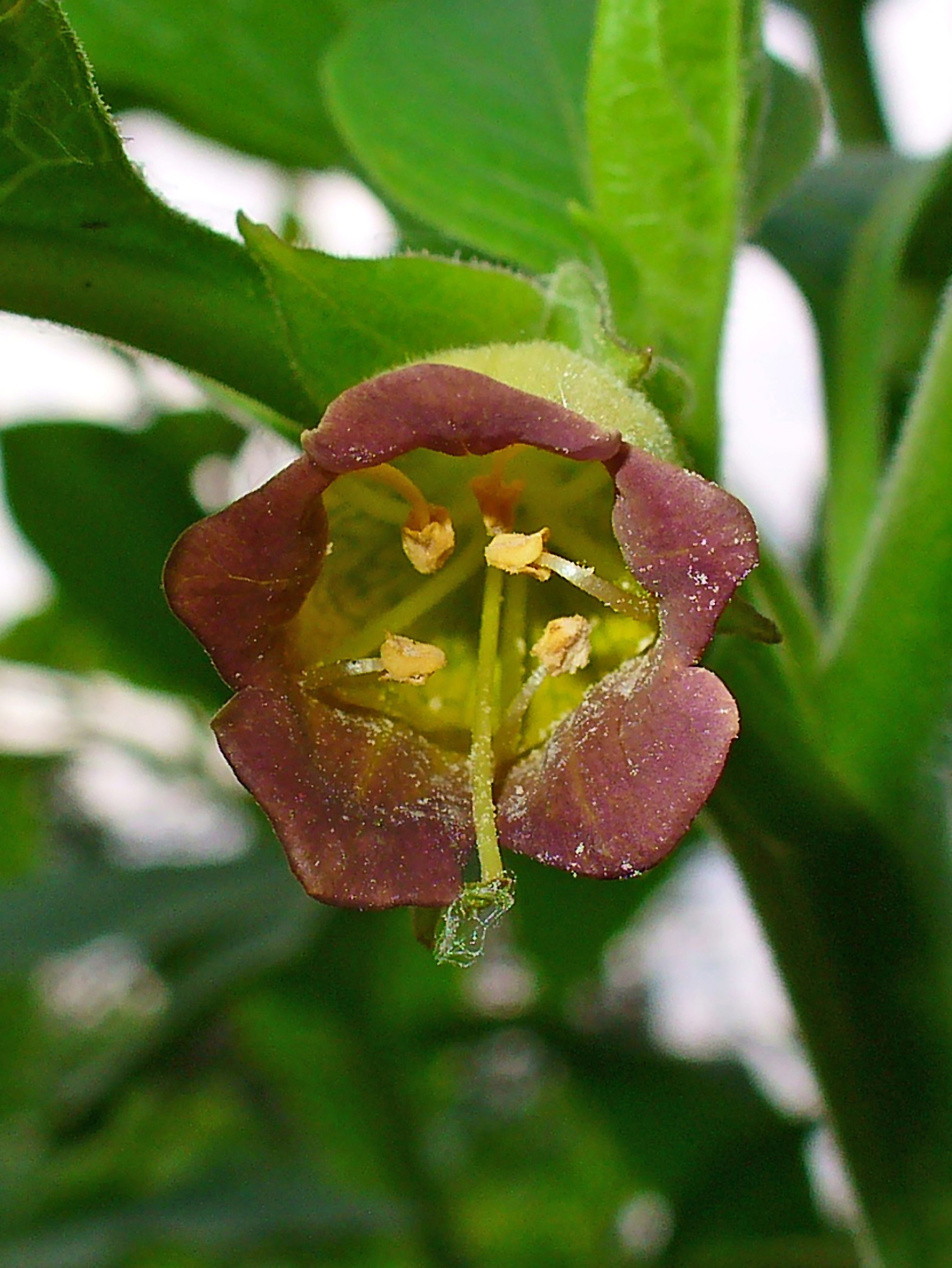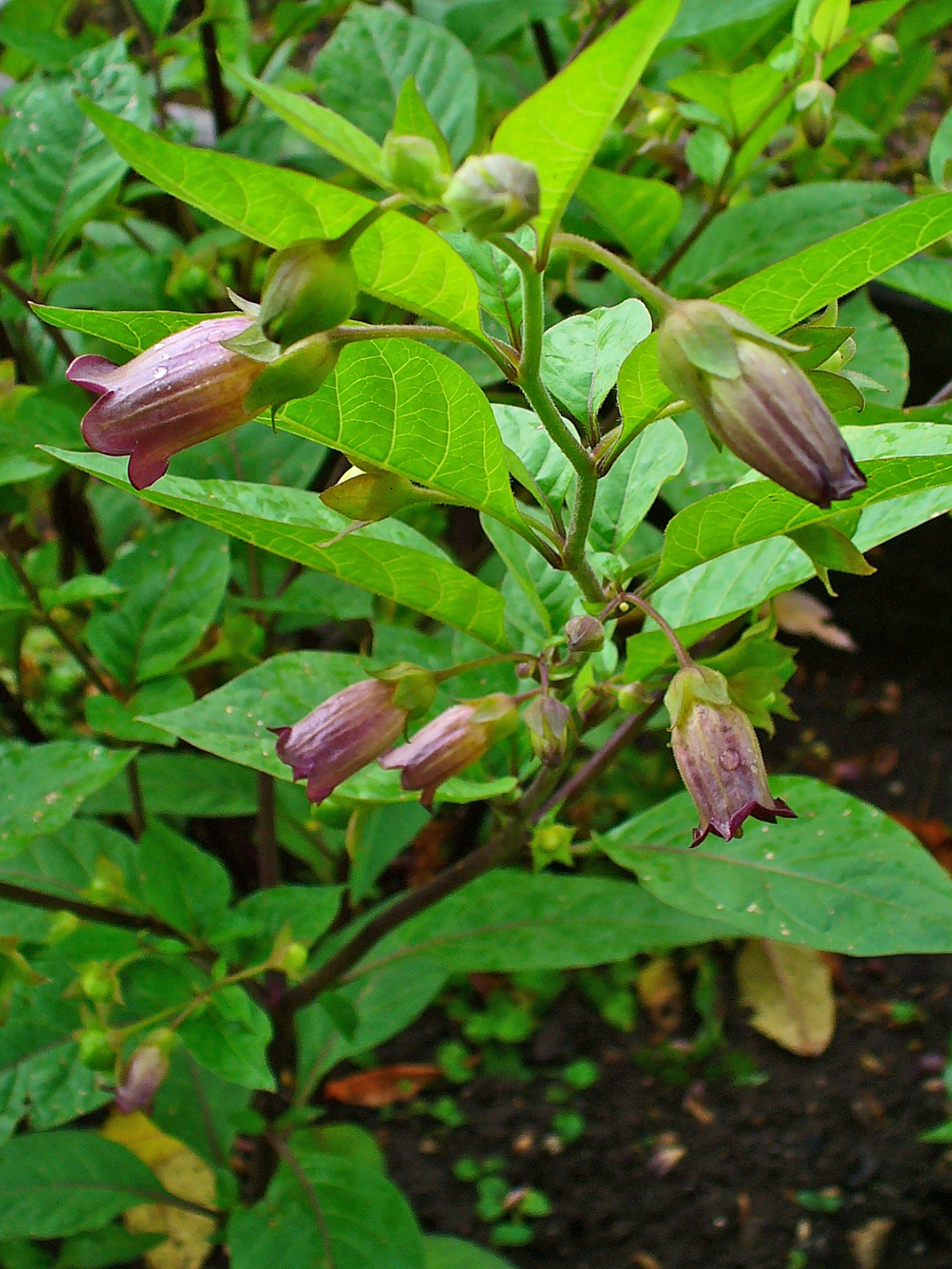Reproduction
The Atropa belladonna plant is perennial and has a very slow, long and irregular germination process and the seeds of the plant are very small in size. The plant grows best at variable temperatures between 15 and 35 degrees Celsius, and at higher elevated soils with high air humidity. The plant thrives in soils that are rich, moist, damp and have been recently cultivated and are free of other shrub-like plants. Belladonna also grows better in shaded areas, as in under trees, as opposed to growing in direct sunlight. It is also best if the soil is light, permeable and chalky. Average seeds take about four to six weeks to grow after they have entered the soil. Atropa belladonna plants flower in midsummer months, June and July, and in order to survive and not completely die in the winter months they must be protected by dead leaves that fall from other trees.
All life cycles of plants are characterized by what is called alternation of generations. This means that multicellular generations of haploids (n) and diploids (2n) take turns in producing the other generation. The diploid plant is known as the sporophyte and the haploid plants are known as gametophytes. Angiosperms being the most derived of the plants have the most reduced gametophytes consisting of only a few cells. The gametophytes give rise to the sperm and eggs Atropa belladonna is an angiosperm, which means some important aspects of the lifecycle include flowers, double fertilization, and fruits. The flowers of the belladonna plant are bell-shaped and a dull purple color and the fruit are the berries of the plant are a dark purple or black color when they are ripened. Some grazing animals, as well as small woodland animals like rabbits, eat the berries of Atropa belladonna and disperse the seeds in their feces. Insects also aid in pollination of the plant.
The life cycle of the belladonna start with the sporophyte, or the plant that you see on the ground. That plant contains flowers and inside those flowers there are sperm, egg, an embryo sac, ovule, ovary, stigma, anther and a pollen tube. Inside the anthers of the flowers there are microspores which develop into pollen grains. These pollen grains will land on the stigma of the flower and release sperm into the pollen tube.
Inside the ovule of the flower there are megasporangium which each contain a megasporocyte. The megasporocyte divides by meiosis and produces four megaspores, but only one of these megaspores survives. This surviving megaspore forms the female gametophyte which forms the egg. Two sperm then travel down the pollen tube to the megasporangium to fertilize the egg which creates a zygote, and the central cell which forms the endosperm. The endosperm is the food supply for the early growing plant until it reaches sunlight and can go through photosynthesis. To learn more about photosynthesis visit the Nutrition page. The zygote develops into the embryo. The embryo and endosperm are surrounded by a seed coat at this time. This structure makes up the seed. The seed is then free to germinate and the embryo can develop into a mature sporophyte and the whole process begins again.
If you wish to go back to the Home Page follow the hyperlink here.

